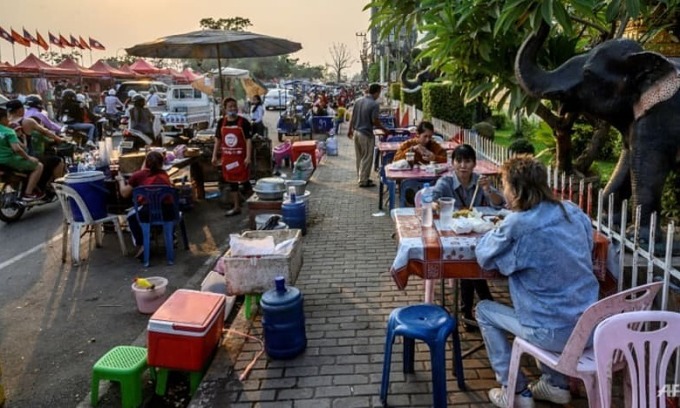Why Do You Want to Go to Myanmar?
IT’S rare that a country bursts onto the tourism scene with quite as much vigor as Myanmar. After decades of isolation, it is Asia’s newest hot spot, offering richly layered history, spectacular natural beauty and the edginess that comes with a country still in transition.
Source: nytimes.com
Since the ruling military junta began to
loosen its grip on the government in November 2010, signs of progress —
like the release of some political prisoners earlier this year and
elections scheduled for April 1, with the opposition leader Daw Aung San
Suu Kyi running for a seat in Parliament — have led Western nations,
including the United States, to consider dropping long-held economic
sanctions.
But a visit to the country, also known as Burma, can be a bit tricky. Here, then, is a cheat sheet for a visit.
BEFORE YOU GO
Although it is now possible to get a
visa on arrival, travel agents recommend having one in hand before your
trip begins. Arrangements take up to three weeks and can be made via
travel agents or directly through the Myanmar Embassy in Washington.
Most tourists
visit during the dry season, from November to February. Vaccinations are
not required, but Myanmar travel experts like Eric Kareus, the Asia
destination manager at Asia Transpacific Journeys, recommend making sure
your tetanus, typhoid and polio shots are up-to-date, and getting a
hepatitis A vaccination. He added that travelers to remote areas,
especially during the summer monsoon season, should consider
prophylactic malarial medication.
Since Myanmar’s
economy is still cash based, plan to pack enough crisp, new dollars
(accepted almost everywhere) for expenses, or settle lodging and flights
in advance through a travel agent.
GETTING THERE
Although
Myanmar’s biggest city, Yangon, is served from most major Asian hubs
(there are no direct flights from the United States), the shortest and
most convenient connections are from Bangkok. Depending on the season,
up to eight flights a day — including service by AirAsia, a regional
low-cost carrier — make the 90-minute trip. Well-maintained regional
jets link major cities within the country.
LODGING
Accommodations
generally provide excellent value (especially compared with neighboring
Thailand) and range from smallish luxury properties in Yangon to
friendly family-run hotels and tropical boutique resorts in other key
areas. Thanks to the British colonial legacy, English is widely spoken
in the major tourist areas.
SAFETY
Karen MacRae, a
senior destination expert at Kensington Tours, said Myanmar is safe for
families and described it as “a whole country full of gentle people.”
However, rebel groups in northern regions of the country, so tourists
should stick to the south and central areas. But crime statistics are
low specifically mentions that “violent crime against foreigners is
rare” — and the Burmese generally welcome visitors.
As in many
developing countries, travelers should drink bottled water only and
avoid raw food except at tourist-friendly restaurants.
WHAT TO EAT
Which isn’t to
say that adventurous eating shouldn’t be high on your agenda. Burmese
cuisine is heavily influenced by its neighbors: India, China, Thailand.
Ms. MacRae, who lived in Myanmar for two years, recommended lighter
dishes like laphet, a pickled tea-leaf salad, and mohinga, a fish
broth-based noodle soup “akin to Vietnamese pho” and best eaten, she
said, at a Yangon street stall.
WHERE TO GO
The classic
Myanmar itinerary begins in Yangon, where visitors will want to spend at
least a day visiting the Shwedagon Pagoda — a towering stupa covered in
pure gold — wandering among the colonial-era buildings downtown and
bargaining for local crafts at the covered Scott Market.
Bagan, a dusty
region 300 miles north of Yangon along the Irrawaddy River, is studded
with thousands of bell-shaped stupas, brick temples and castlelike
structures that date from the 11th to 13th centuries. Bagan can be
reached from Yangon by air or via comfortable cruise boats that ply the
Irrawaddy to and from Mandalay, in the central area of the country.
Both Lake Inle,
in ethnically diverse Shan State, and Ngapali Beach, along the country’s
western Bay of Bengal shoreline, are good places for low-key R & R,
with new resorts opening regularly. Emerging destinations include the
pristine Mergui Archipelago in the southeast, great for snorkeling, and
Mrauk-U, a 15th-century royal capital in the southwestern state of
Rakhine.
Source: nytimes.com



Nhận xét
Đăng nhận xét